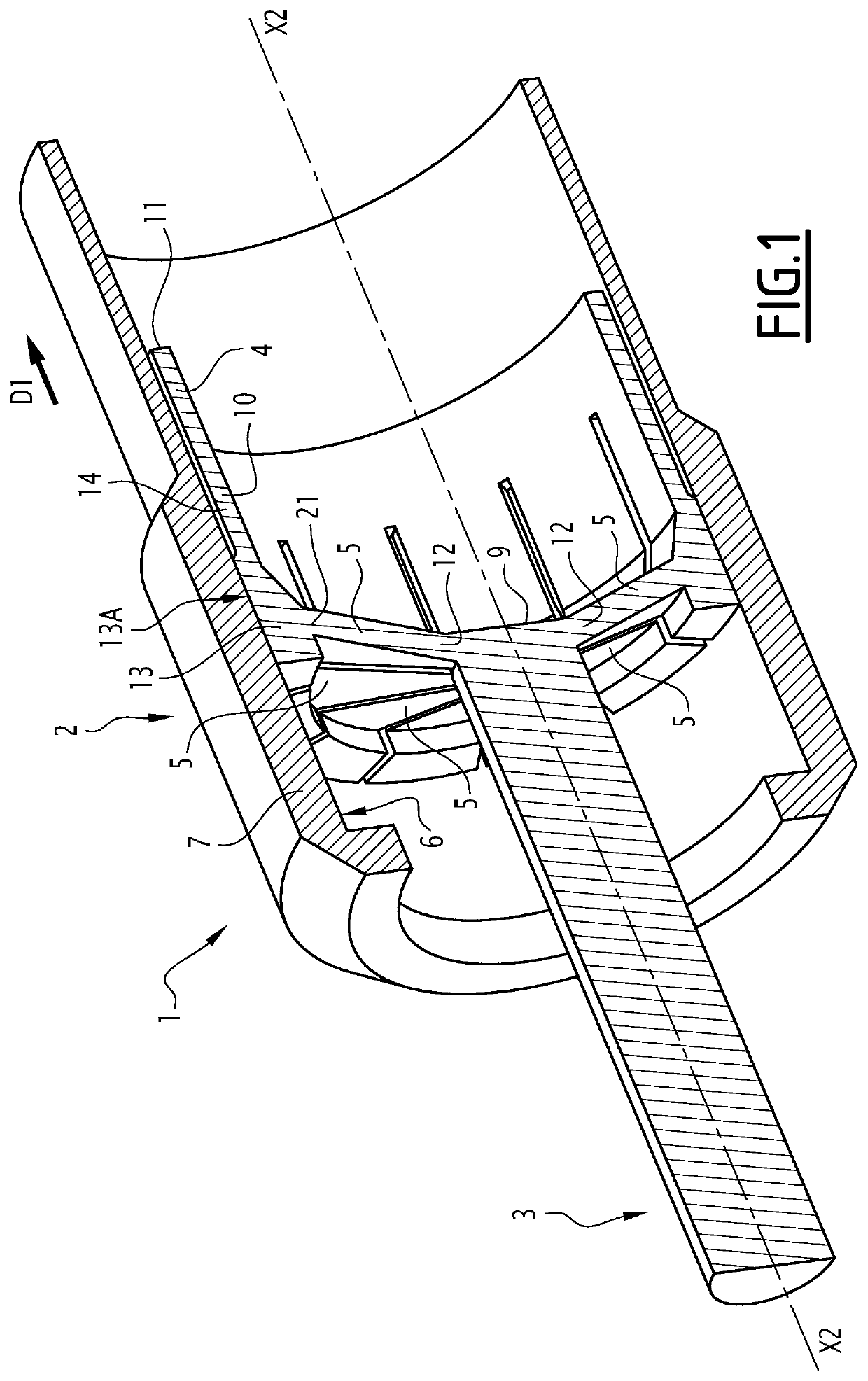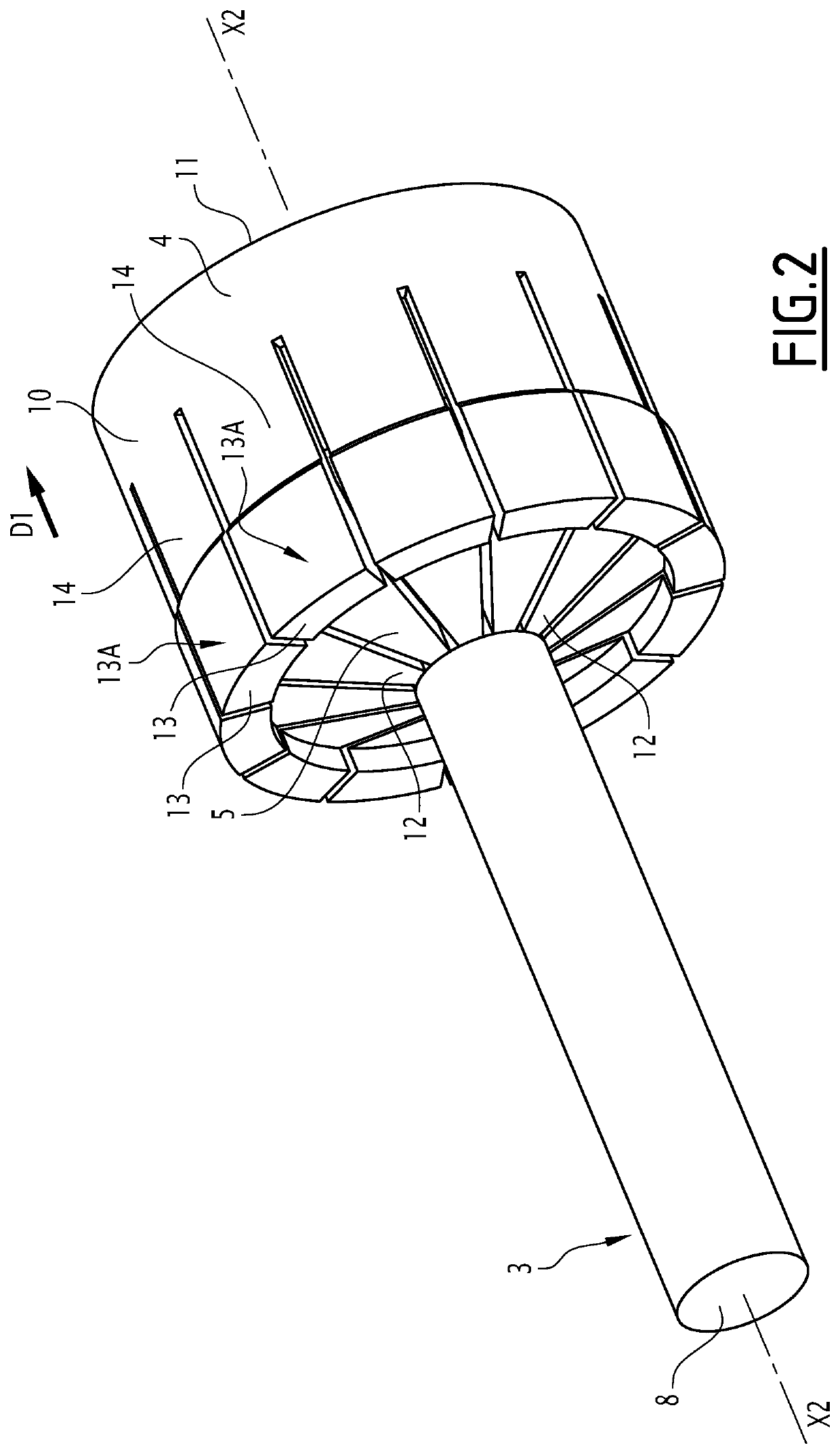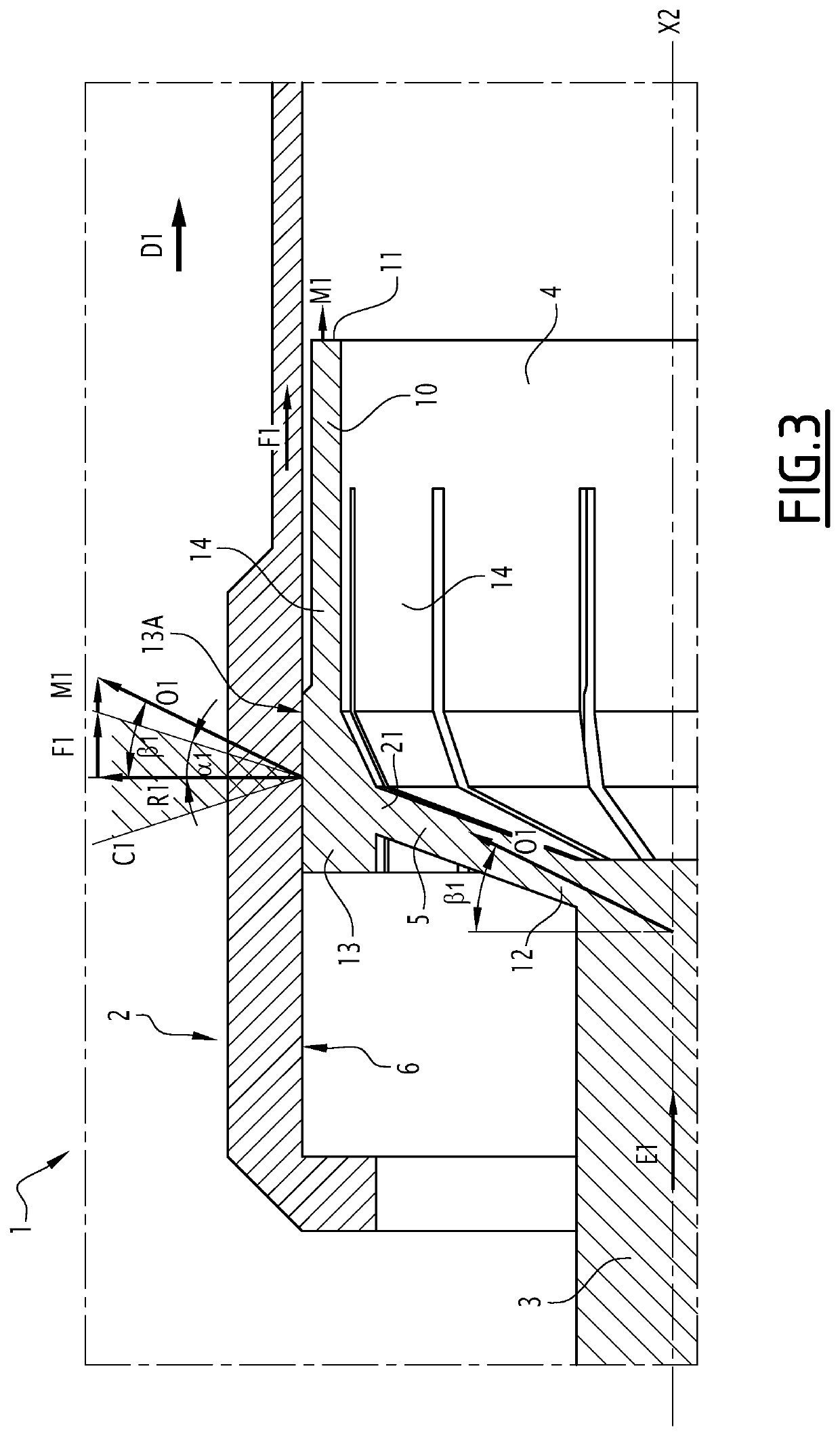Force-shunting device and mechanical actuator comprising such a device
a technology of force-shunting device and mechanical actuator, which is applied in the direction of belt/chain/gearing, aircraft transmission means, undercarriage, etc., can solve the problems of unsuitable aircraft equipment, high cost, outside forces, etc., and achieve the effect of reliable and cost-effectiveness
- Summary
- Abstract
- Description
- Claims
- Application Information
AI Technical Summary
Benefits of technology
Problems solved by technology
Method used
Image
Examples
Embodiment Construction
[0031]FIG. 1 shows a force-shunting device 1 that comprises a tube 2, a first member 3, a second member 4 and a plurality of primary legs 5. The example embodiment of FIG. 1 will be taken in the context of an aircraft, and more specifically in the case where the device 1 is implemented in a mechanism for deploying and retracting the landing gear of the aircraft.
[0032]The tube 2 extends along a main axis X2, which preferably forms its axis of revolution. The tube 2 thus for example forms an annular sleeve, the axis of which is coaxial to the main axis X2. The tube 2 has an inner wall 6, which in turn is preferably cylindrical and coaxial to the main axis X2, but which may also have a prismatic or frustoconical shape. The inner wall 6 forms a friction wall and is therefore formed by a friction-resistant material, for example a metal material. The tube 2 has a general construction that allows the inner wall 6 to withstand frictional forces, and radial forces relative to the main axis X...
PUM
 Login to View More
Login to View More Abstract
Description
Claims
Application Information
 Login to View More
Login to View More - R&D
- Intellectual Property
- Life Sciences
- Materials
- Tech Scout
- Unparalleled Data Quality
- Higher Quality Content
- 60% Fewer Hallucinations
Browse by: Latest US Patents, China's latest patents, Technical Efficacy Thesaurus, Application Domain, Technology Topic, Popular Technical Reports.
© 2025 PatSnap. All rights reserved.Legal|Privacy policy|Modern Slavery Act Transparency Statement|Sitemap|About US| Contact US: help@patsnap.com



